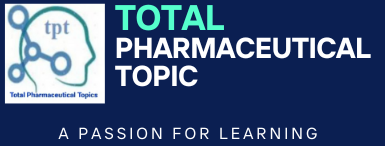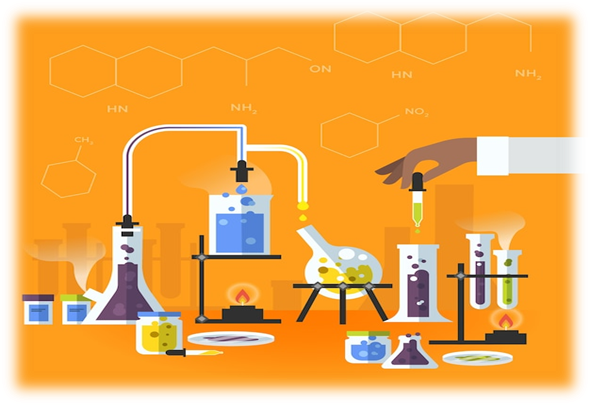The
development of drug substances has evolved significantly over the years. In the
past, drug substances /API were often
discovered through serendipity or by isolating compounds from natural sources.
However, modern drug discovery and development have become more systematic and
technologically advanced.
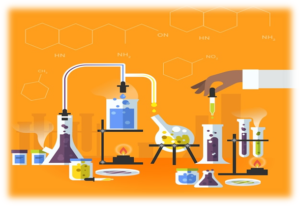 |
| Figure 01: Evolution of Drug Substance Development |
The
development of drug substances has evolved significantly over the years. In the
past, drug substances /API were often
discovered through serendipity or by isolating compounds from natural sources.
However, modern drug discovery and development have become more systematic and
technologically advanced.
In
the pharmaceutical industry’s endeavor to research and produce effective
medicines, the growth of drug substance development is a crucial aspect. This
procedure has significantly improved throughout time, moving away from outdated
techniques and toward more modern, precise strategies.
These developments have
sped up the process of developing new drugs while also improving the efficacy
and safety existing pharmaceutical ingredients. The significance of this
evolution rests in its capacity to solve unmet medical needs, enhance patient
outcomes, and open the door for novel treatments that attack complicated diseases,
ultimately enhancing the quality of life for millions of people around the
world.
Challenges
and Innovations
Despite
the remarkable progress in drug substance development, the pharmaceutical
industry faces several challenges. These include:
Drug
substances are crucial to modern healthcare, but their creation and production
are not without difficulties and ongoing improvements. Because of changing
regulatory requirements / regulations
and rising demand for personalized medicine, the pharmaceutical business must
work to ensure the safety, effectiveness & quality of therapeutic
substances.
The use of cutting-edge technologies like artificial intelligence
(AI) and machine learning for drug discovery, the emergence of novel drug
delivery systems to enhance bioavailability, and the adoption of continuous
manufacturing processes to improve efficiency and lower costs are all examples
of innovations in the development of drug substances / API. In order to lessen
its influence on the environment, the industry is also placing more and more
emphasis on sustainability and green chemistry techniques.
1. Increasing Complexity
As
researchers target more complex diseases and conditions, drug substances /API
are becoming increasingly intricate. The development of biopharmaceuticals,
such as monoclonal antibodies and gene therapies, presents new challenges in
manufacturing and characterization.
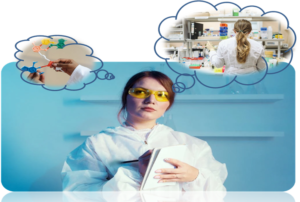 |
| Figure 02: Increasing Complexity of Drug Substance Development |
Increasing
complexity in drug substances/API presents both challenges and opportunities
for the pharmaceutical industry. On one hand, the discovery and development of
novel drug substances with intricate molecular structures demand advanced
scientific techniques and resources, leading to higher research and development
costs.
Additionally, manufacturing and quality control become more demanding as
complexity rises, posing regulatory and production challenges. On the other
hand, these complex drug substances often hold great promise in treating
diseases that were previously untreatable, and they can provide more targeted
and efficacious therapies with fewer side effects.
Innovations in analytical
methods, process development, and regulatory frameworks are essential to
harness the potential of these complex substances and ensure their safety and
efficacy, ultimately advancing the field of medicine and improving patient
outcomes.
2. Cost and Time Pressure
Developing
a new drug substance/APIs is a time-consuming and costly process.
Pharmaceutical companies are constantly seeking ways to streamline the process
and reduce development timelines.
Significant
obstacles in the field of pharmacological substance development and innovation
include cost and time constraints. The pharmaceutical sector requires cost- and
time-efficient techniques in addition to scientific brilliance when introducing
new pharmaceuticals to the market.
It is vital to strike a balance between
these forces since lengthy development times and high costs may make
life-saving treatments more difficult to get and more expensive to buy. To
overcome these obstacles, advances in pharmacological substance development
such as high-throughput screening, improved computer modeling, and bioprocess
optimization are crucial.
These advancements help researchers find and create
therapeutic ingredients more quickly while upholding quality and safety
requirements, which ultimately increases the significance and influence of
pharmaceutical advances on the world of healthcare.
3. Regulatory Norms
Regulatory
requirements continue to evolve, posing challenges for drug substance
manufacturers. Staying compliant with changing regulations is essential for
market approval.
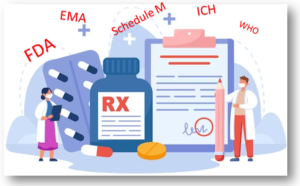 |
| Figure 03: Regulatory in Drug Substance Manufacturing |
In
the context of drug substance/API development and innovation, regulatory
obstacles represent a significant difficulty. In order to guarantee the safety,
efficacy & quality of pharmaceutical items, regulatory agencies apply a
complicated web of laws, regulations, and procedures.
It takes a lots of time
and effort to navigate these strict standards, which frequently differ by
location. Innovations in the development of drug substances must not only
adhere to growing legal requirements but also to scientific and medical
standards.
In order to introduce novel, potentially life-saving medications to
the market while upholding the highest standards for patient safety and product
integrity, it is essential to strike this delicate balance. Success in the
pharmaceutical industry therefore requires keeping up with regulatory
developments and communicating proactively with regulatory organizations.
4. Supply Chain Vulnerabilities
The
COVID-19 pandemic highlighted vulnerabilities in the pharmaceutical supply
chain. Ensuring a stable supply of critical drug substances has become a top
priority.
Vulnerabilities
in the supply chain related to the production of pharmacological substances
pose a serious problem with significant effects on global healthcare.
Regulational challenges, geopolitical conflicts, natural disasters, and the
expanding complexity of pharmaceutical supply networks are just a few of the
variables that make up these vulnerabilities.
These difficulties may impair the
timely and reliable delivery of vital medicinal ingredients, resulting in
shortages and jeopardizing patient access to life-saving drugs. However,
important answers are already being offered by breakthroughs like blockchain
technology, enhanced analytics, and agile manufacturing techniques.
These
innovations reduce risks, guarantee the integrity of drug substances, and
eventually contribute to the significance of drug substance availability in
preserving public health by improving visibility, traceability, and
adaptability within the supply chain.
5. Environmental Impact
The
pharmaceutical industry is increasingly focused on sustainability. Developing
eco-friendly processes for drug substance manufacturing is a growing area of
innovation.
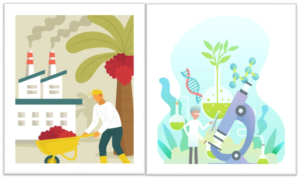 |
| Figure 04: Environmental Impact in Drug Substance Manufacturing |
The pharmaceutical business is gravely concerned about the effects of medication substance manufacturing and consumption on the environment. The huge amounts of water and energy used, the amount of waste produced, and the amount of greenhouse gas emissions throughout the medication production procedures present problems.
Innovations in the form of green chemistry and sustainable manufacturing techniques are emerging to address these problems. Through the application of greener, more effective methods, the recycling of raw materials and solvents, and the creation of biodegradable medication formulations, these developments seek to lessen the environmental impact of the production of pharmaceuticals.
Significantly, these developments improve the overall sustainability of therapeutic substance development by not only reducing environmental harm but also lining up with the expanding social and governmental needs for environmentally friendly medications.
In Brief……
The
importance of drug ingredients in the intricate world of medicines cannot be
emphasized. They go through laborious production procedures and adhere to
stringent regulatory standards, serving as the cornerstone on which safe and
effective medications are constructed.
Understanding the significance of drug
ingredients provides insight into the pharmaceutical industry’s dedication to
provide patients with high-quality healthcare all over the world.
As
pharmaceutical science continues to evolve, the importance of drug substances /
APIs remains unwavering, providing hope and healing to countless individuals in
need.
The journey of a drug substance manufacturing start from its inception in
the laboratory to its delivery in a patient’s hands. This is a testament; to
the dedication of scientists, researchers & manufacturers working
tirelessly to advance healthcare for all.
Learn More………
Pharmaceutical Drug substance (API) and Drug Product: Definition
Drug Substance and Drug Product Manufacturing Flow: Discovery to Delivery
Drug Substance in Pharmaceuticals!! Unveiling Its Vital Role
Pharmaceutical Regulatory Authorities all over the world
